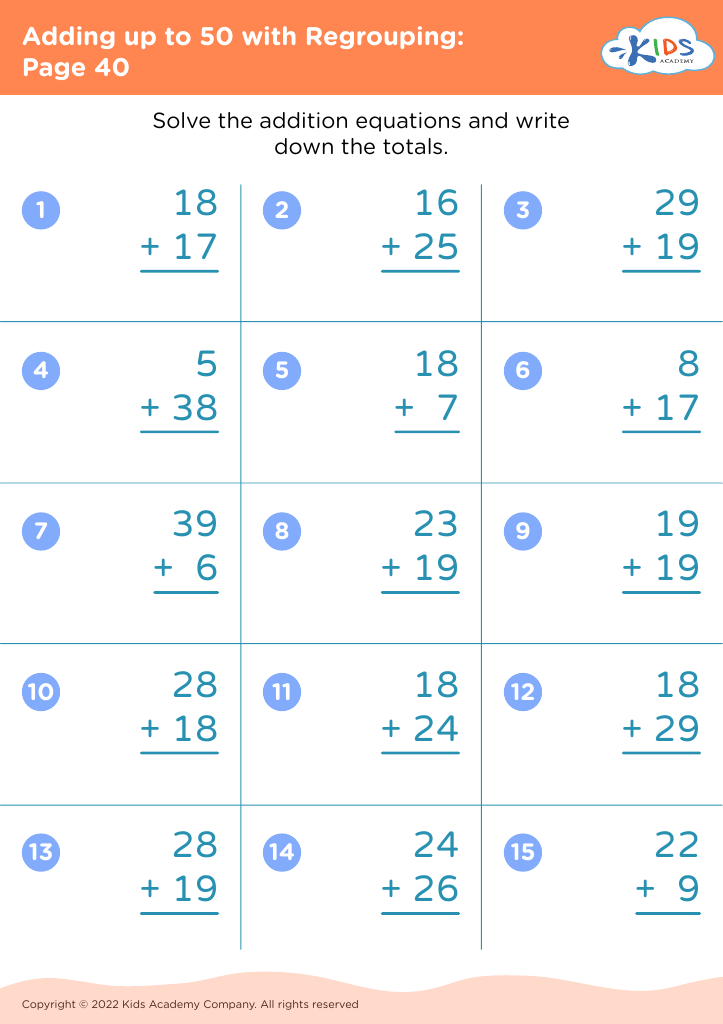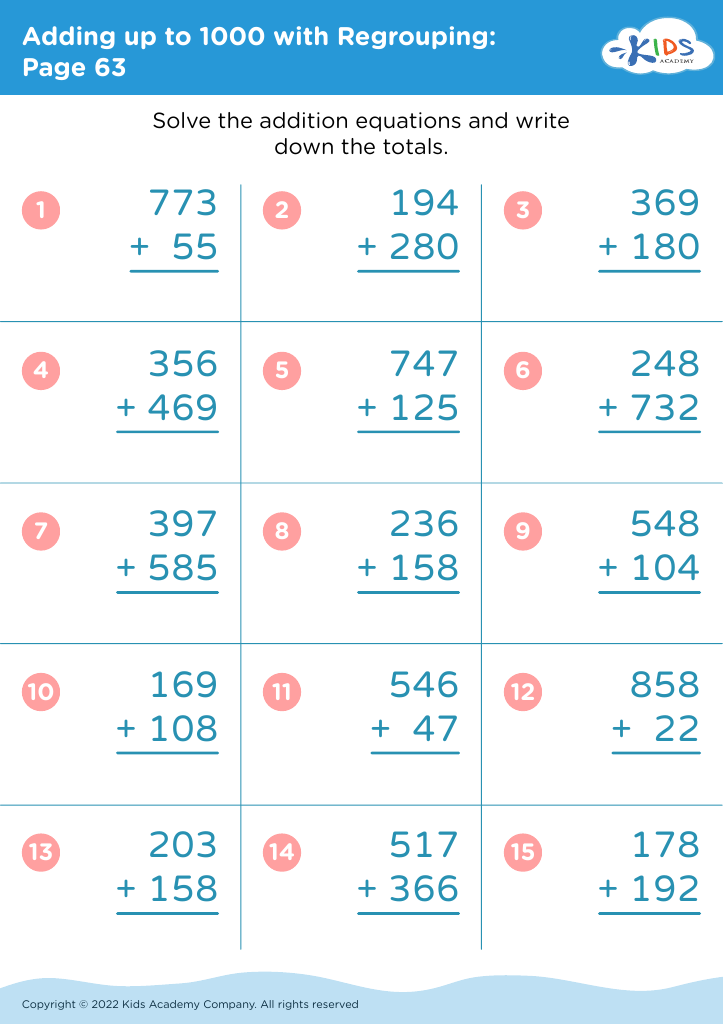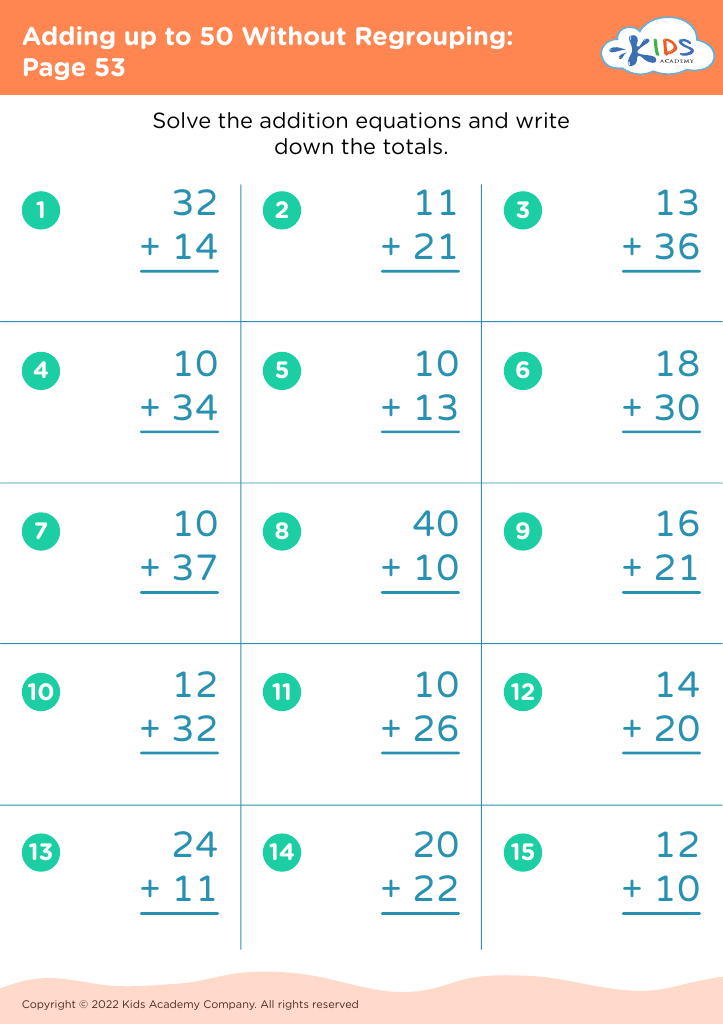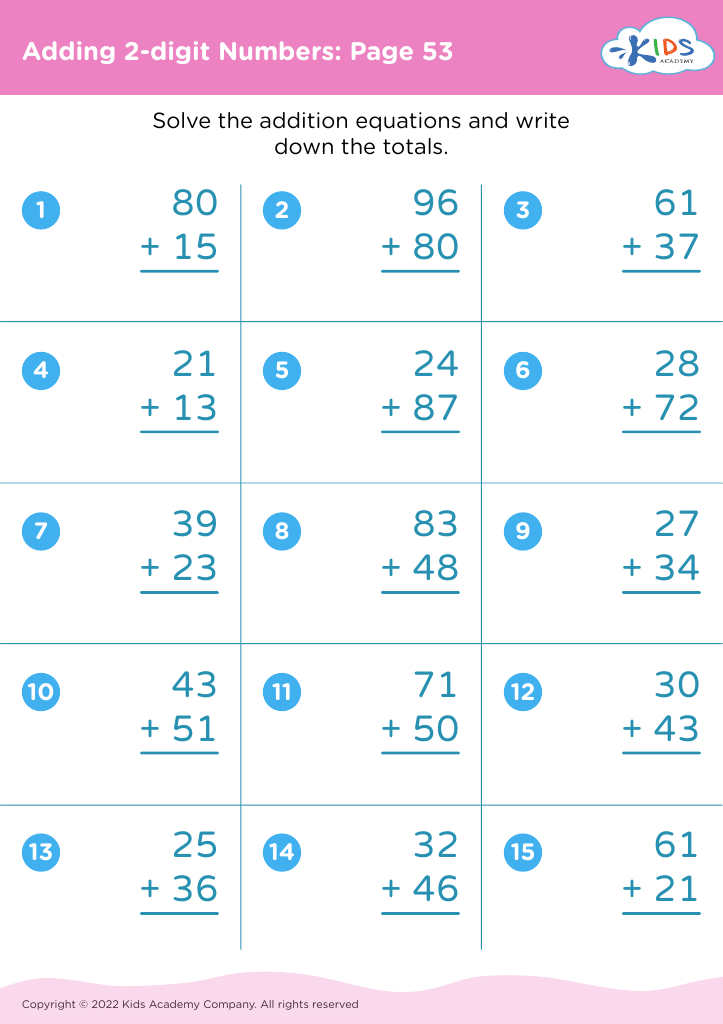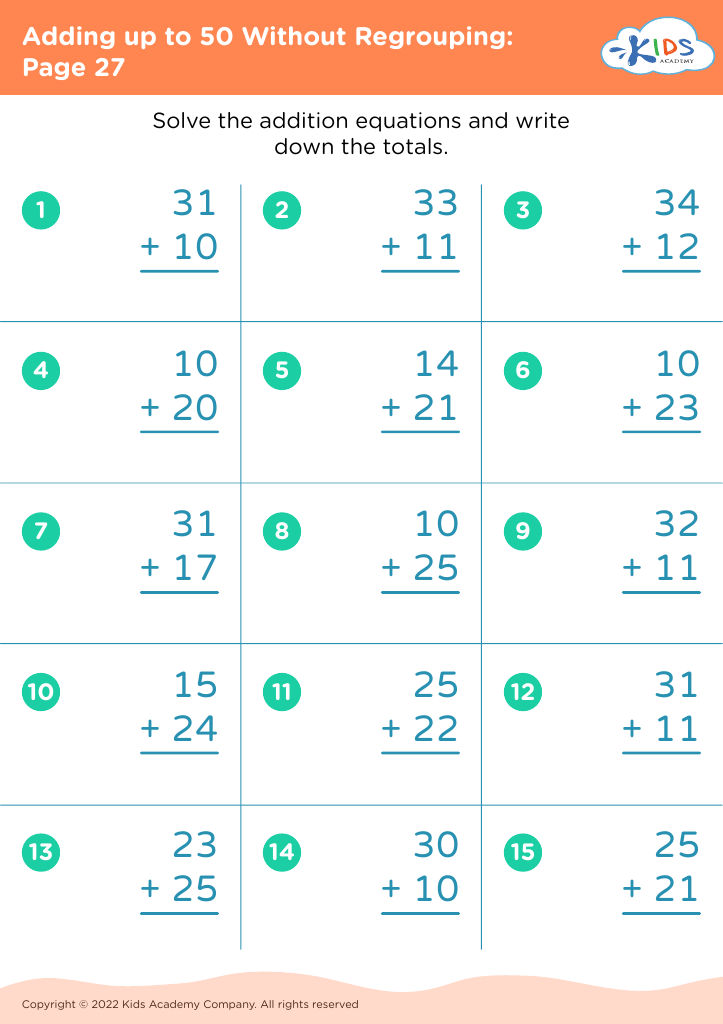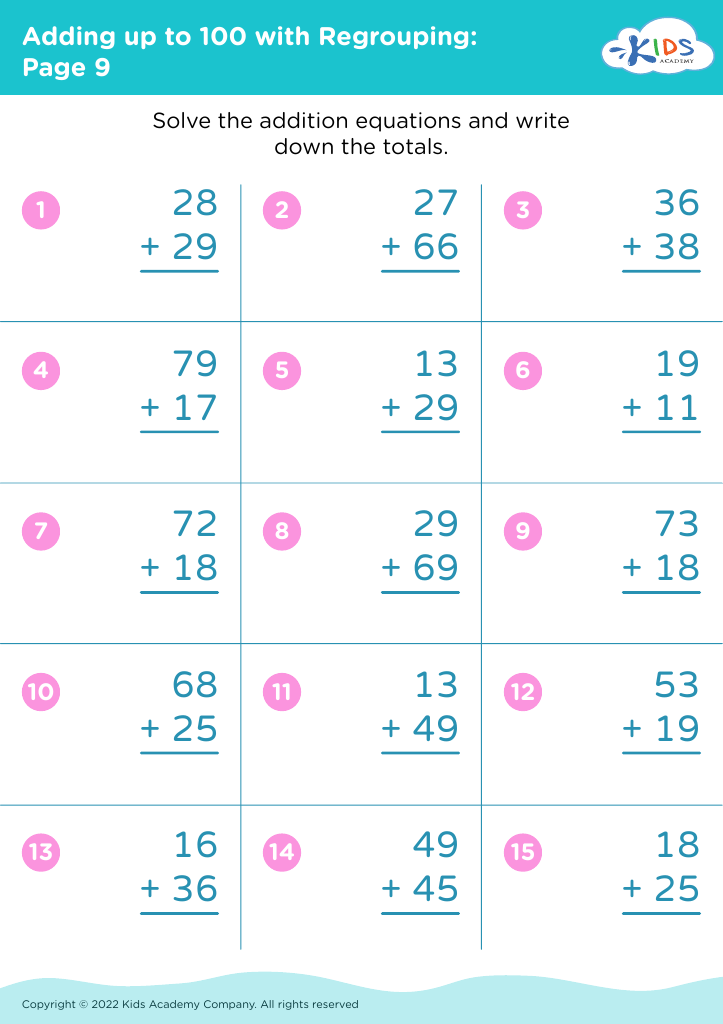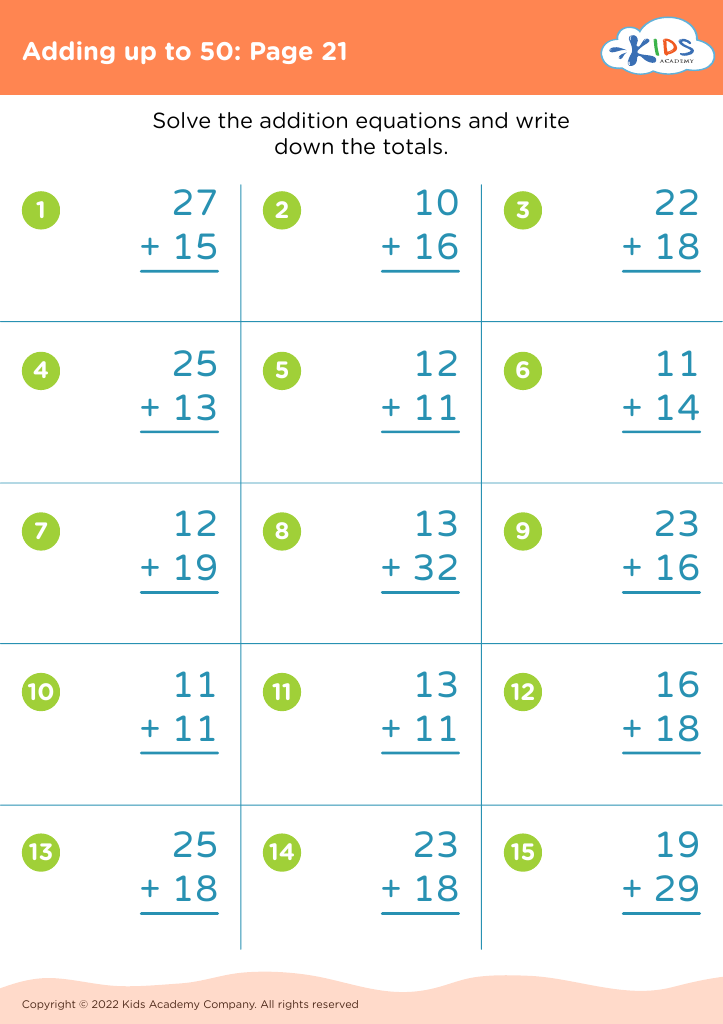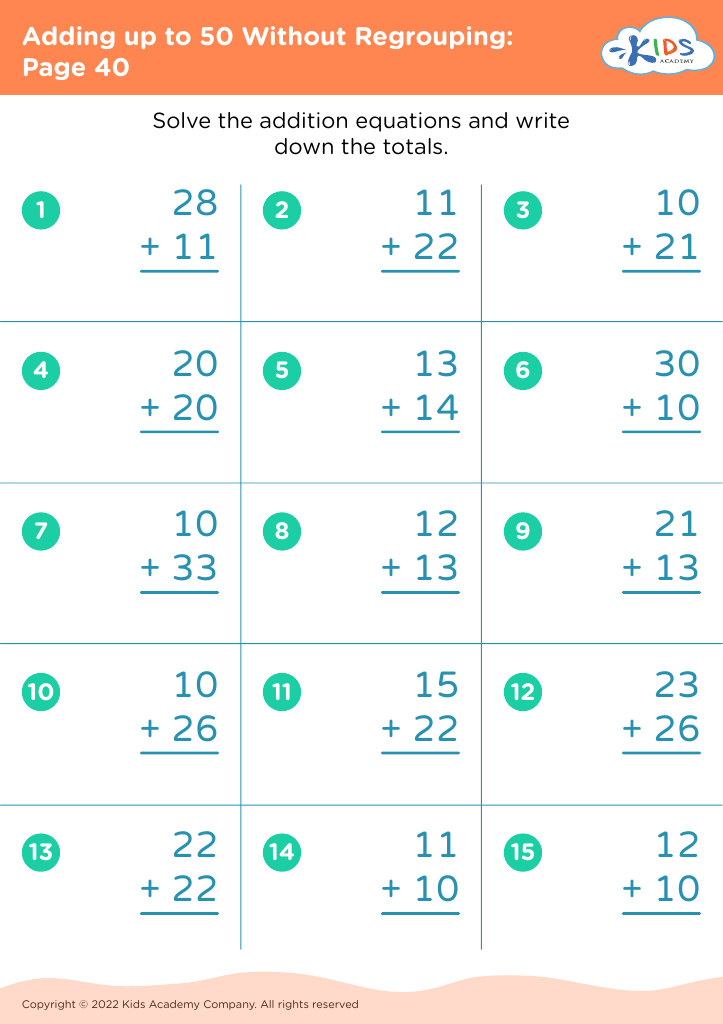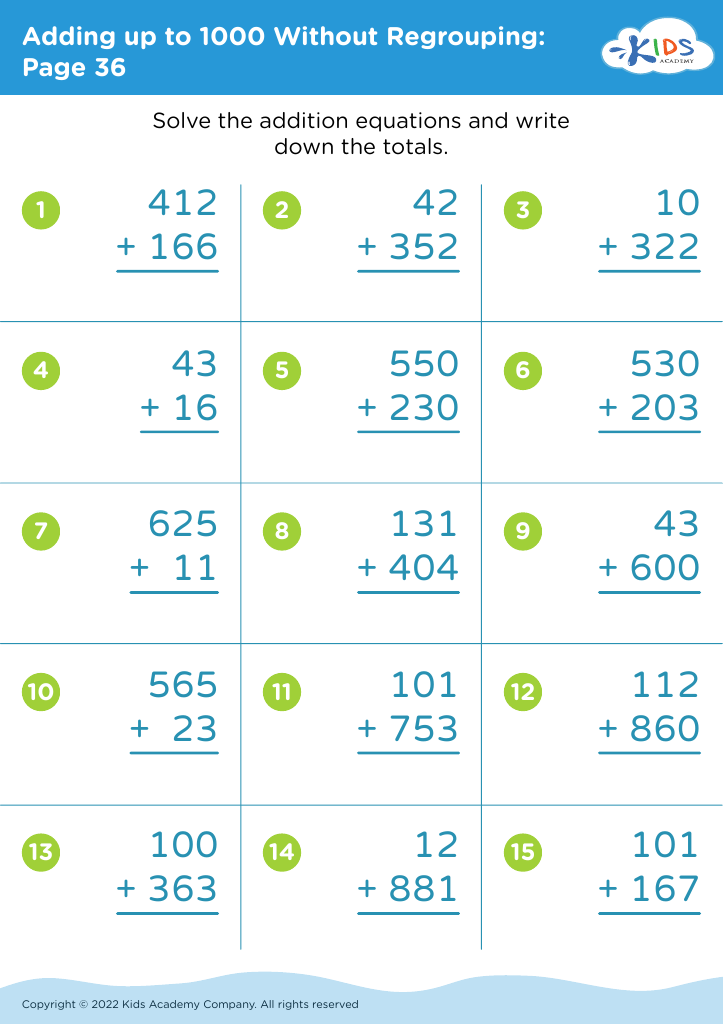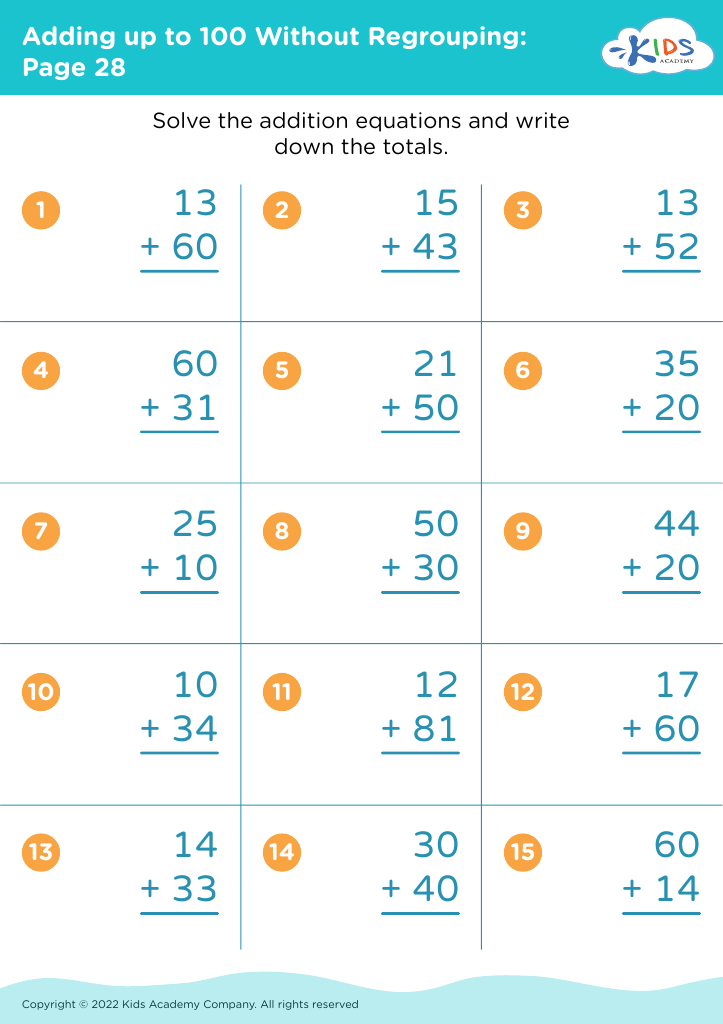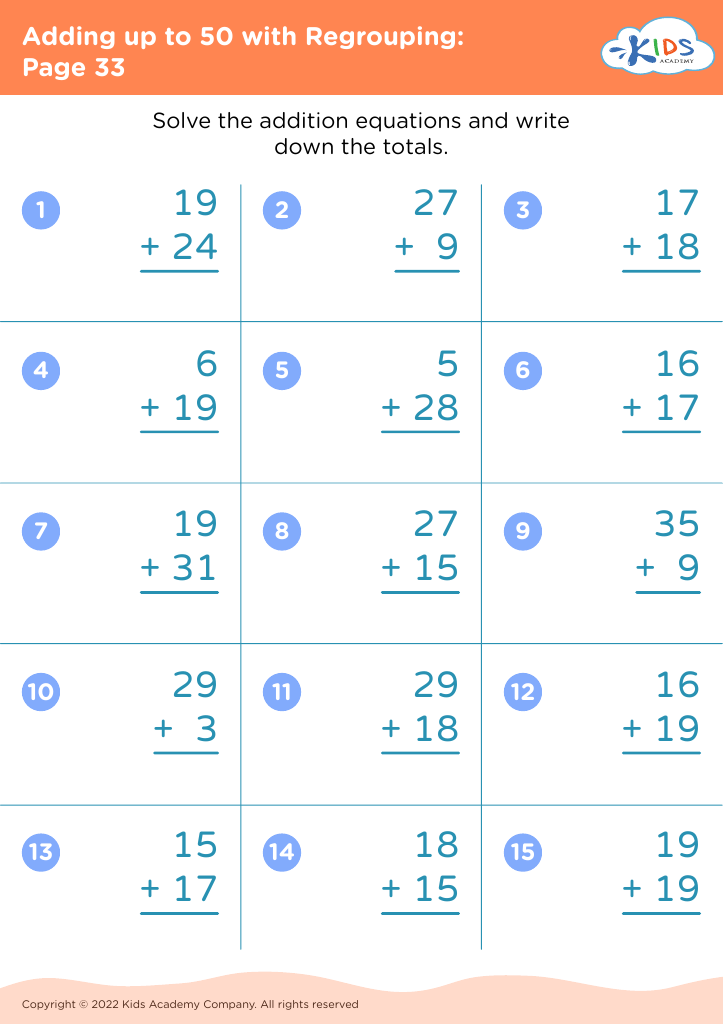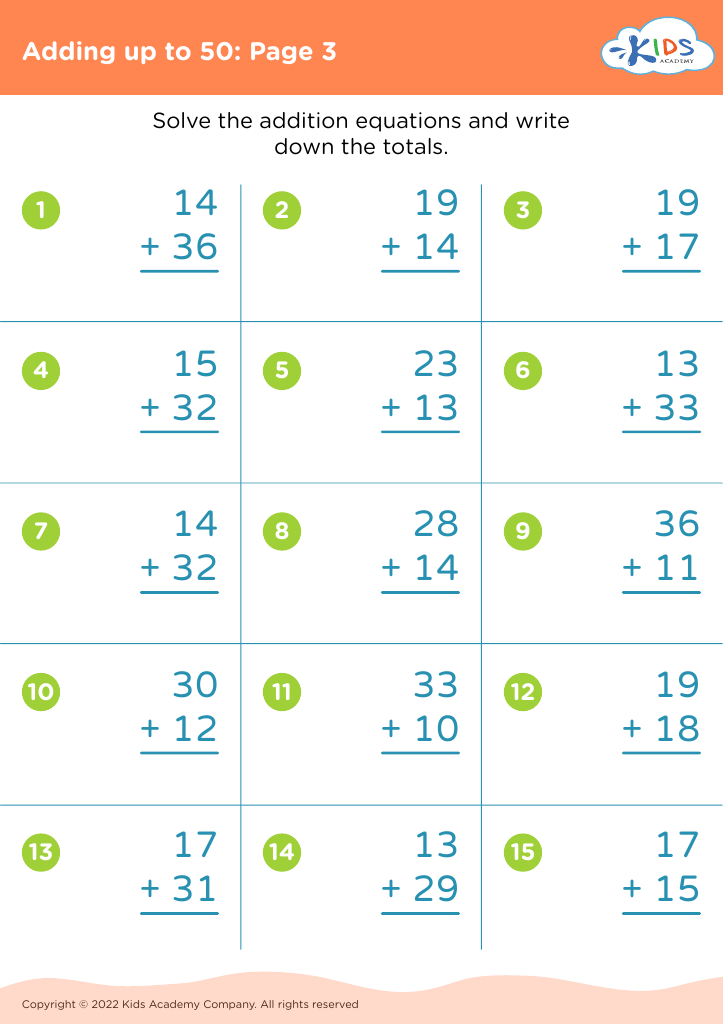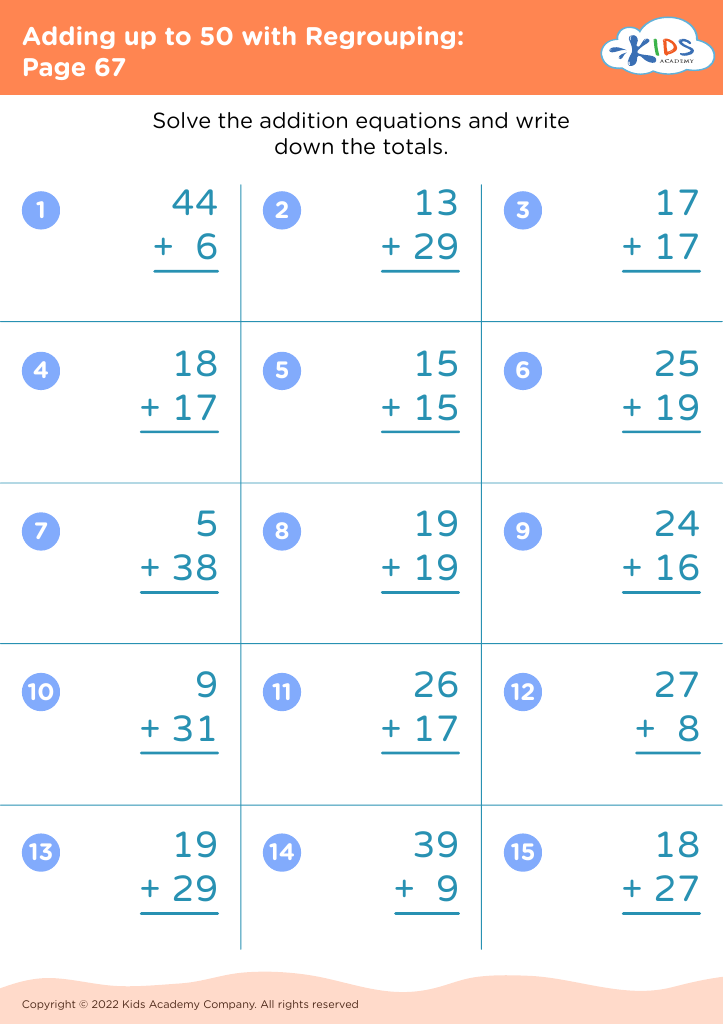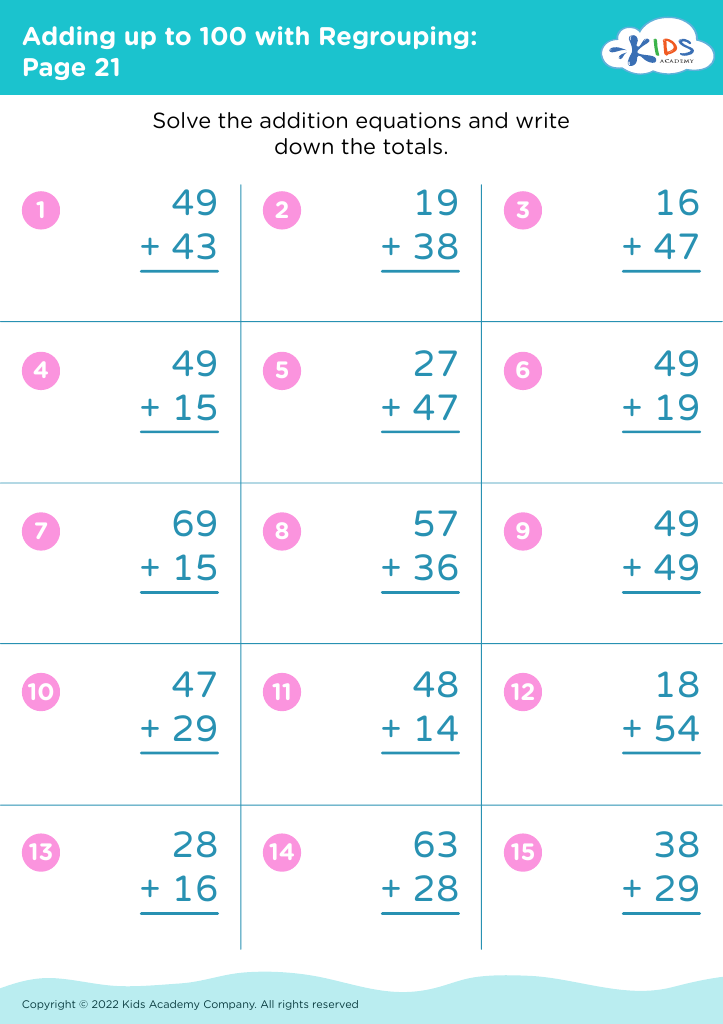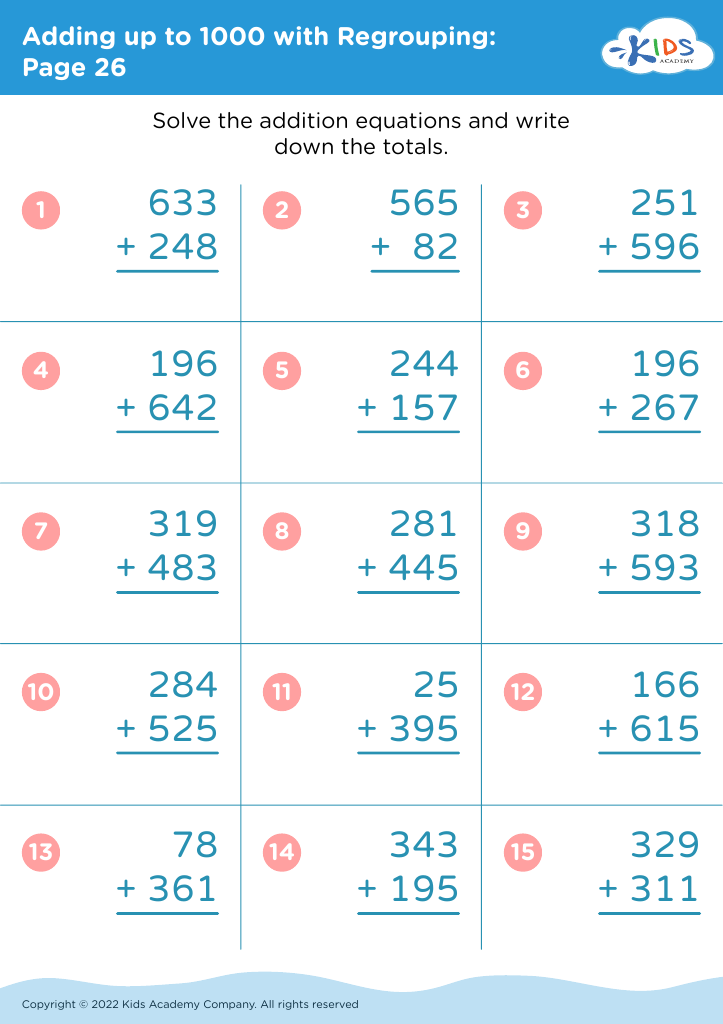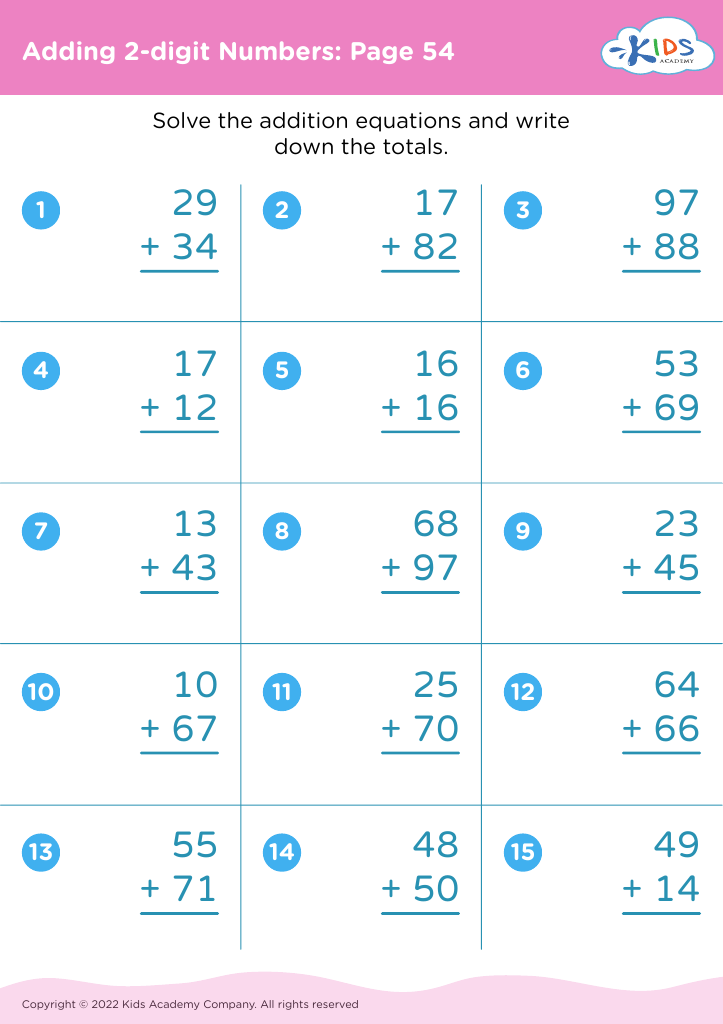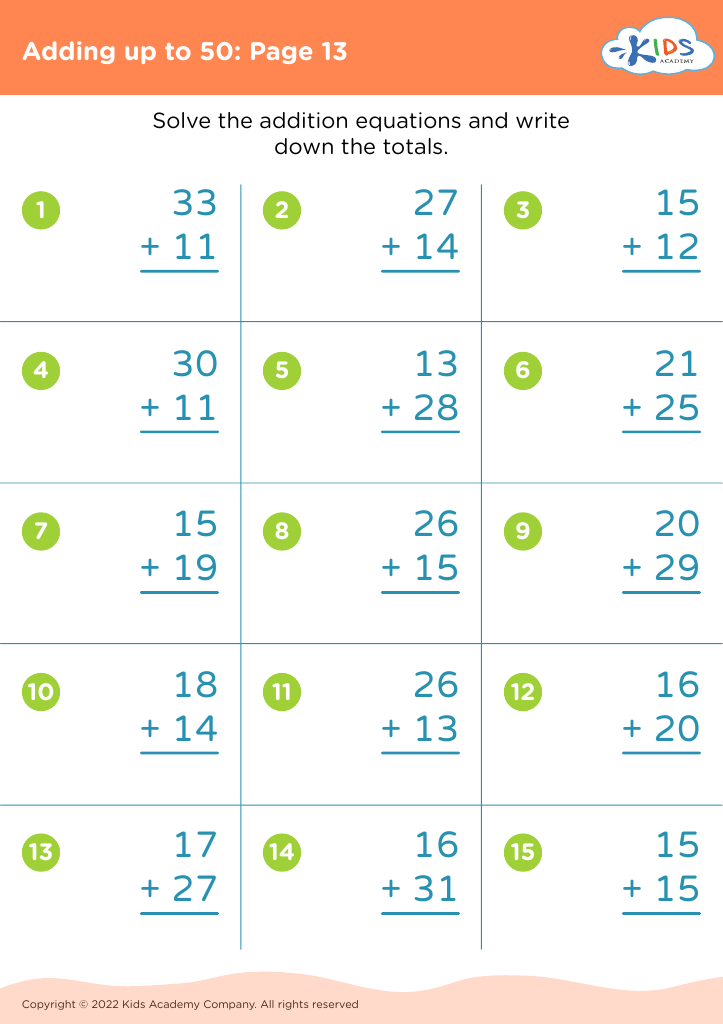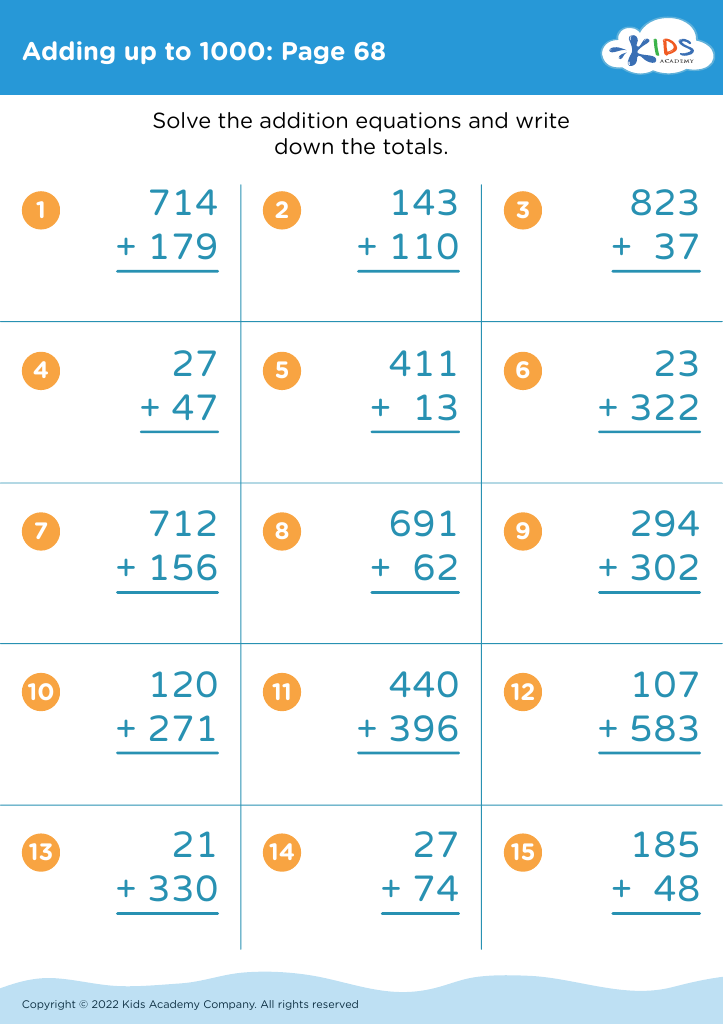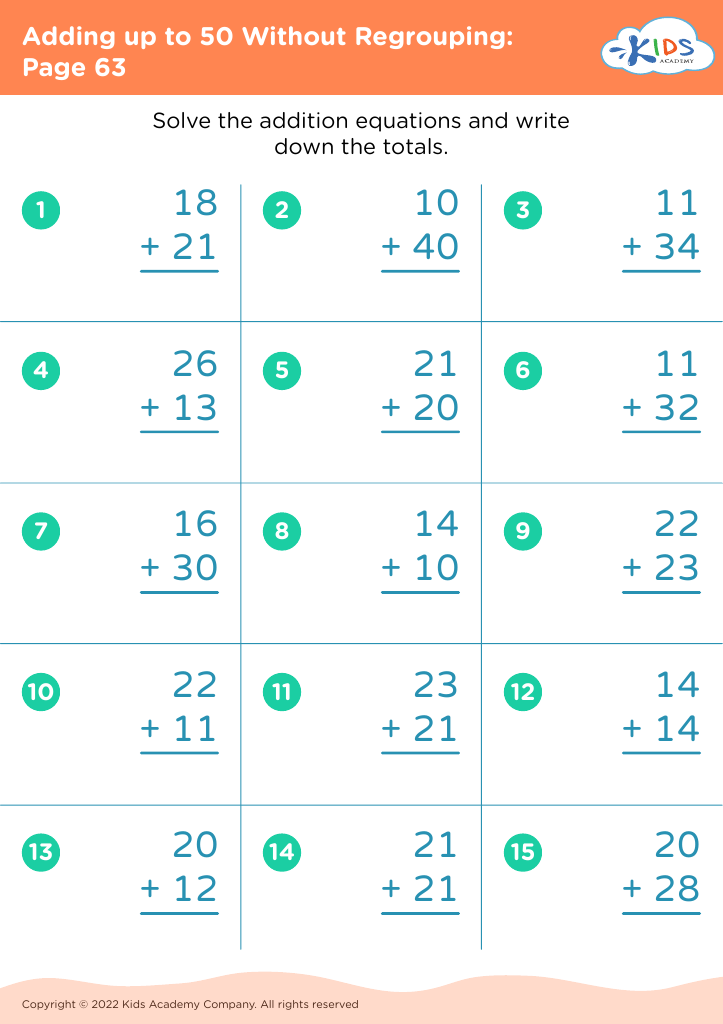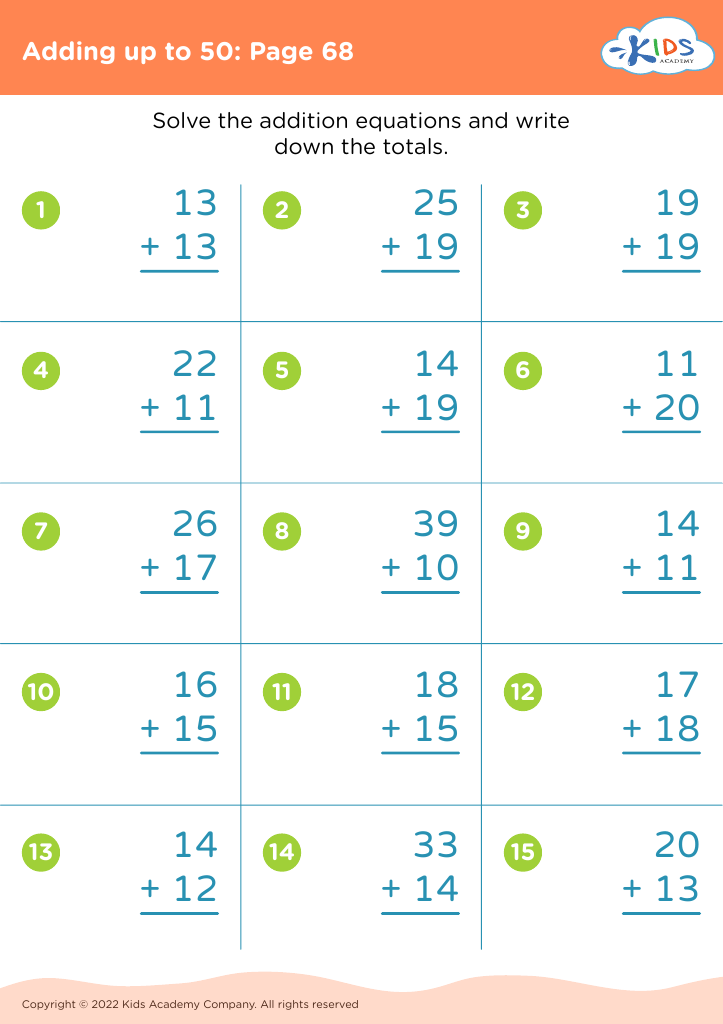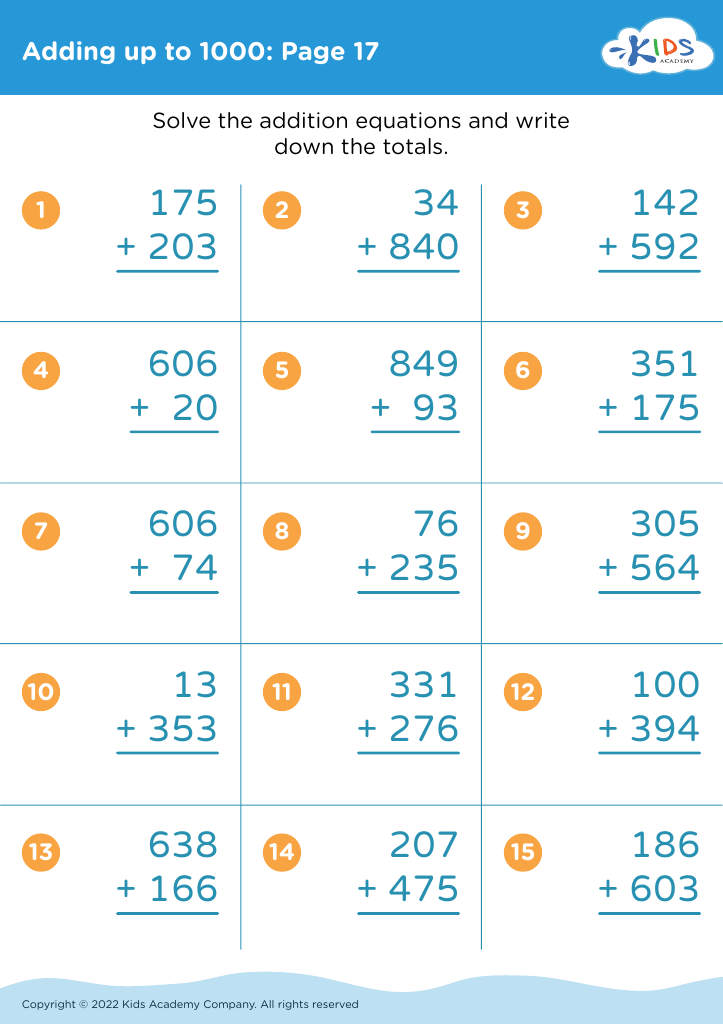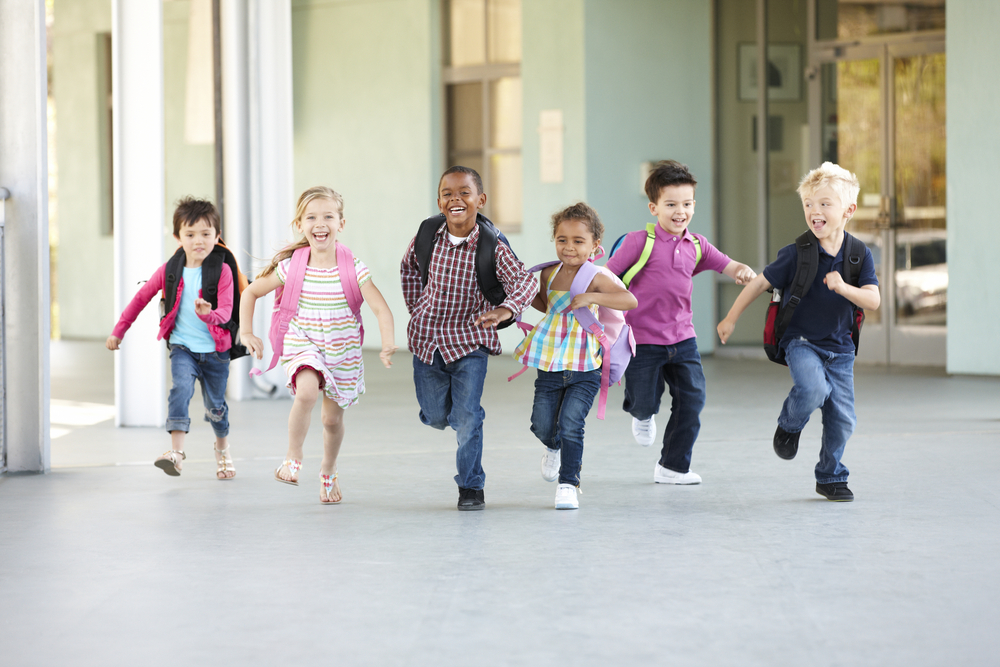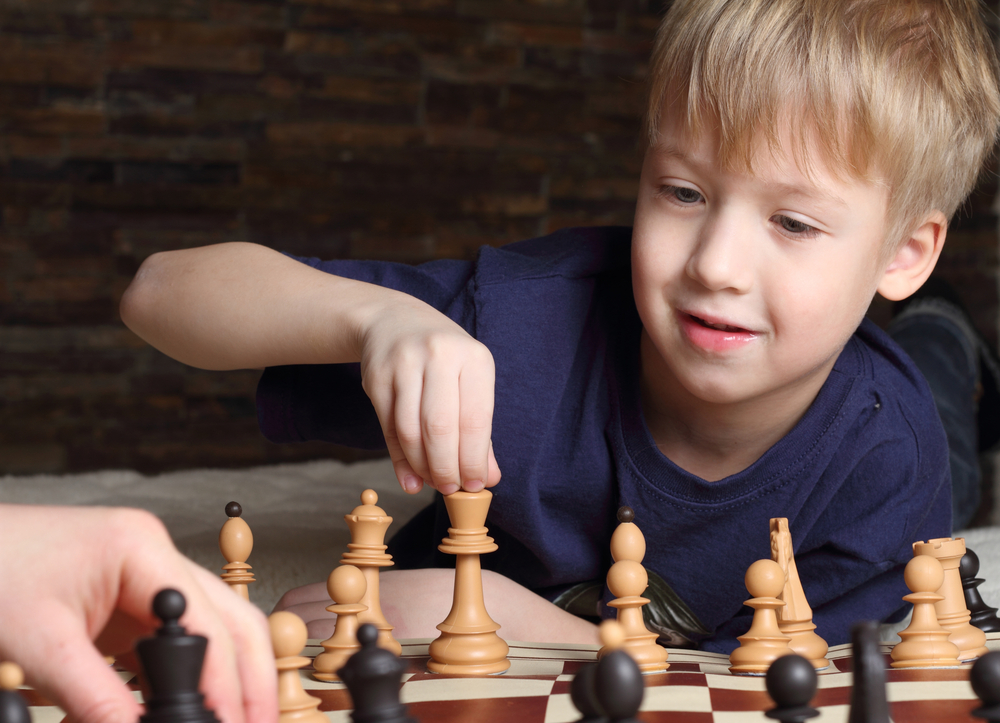Understanding fractions Addition Worksheets for Ages 3-8
158 filtered results
-
From - To
Our "Understanding Fractions Addition Worksheets for Ages 3-8" provide engaging and educational activities to help young learners grasp the basics of fraction addition. These worksheets feature colorful visuals and simple exercises to make learning fun and intuitive. Perfect for early grade students, they offer a step-by-step approach to understanding fractions through hands-on practice. Created by educational experts, these resources aim to build a strong foundation in math, empowering children to advance with confidence. Ideal for classroom use or at-home practice, our worksheets help turn learning fractions into an enjoyable experience for kids.
Understanding fractions and addition for children ages 3-8 is foundational for several critical reasons. During early childhood, the brain is highly receptive to new information and developing cognitive skills. Introducing fractions and addition at this age builds a strong mathematical foundation that supports future learning.
Firstly, teaching fractions helps young children understand the concept of parts of a whole, which is essential for everyday problem-solving skills. For instance, sharing food easily demonstrates fractions, making these lessons relatable and practical. Understanding that two halves make a whole or four quarters make a dollar lays the groundwork for more complex mathematical concepts like division, ratios, and percentages.
Additionally, early experiences with addition not only boost numerical literacy but also improve logical thinking and reasoning. Counting, manipulating objects, and solving simple addition problems help to reinforce these concepts. When teachers and parents demonstrate adding fractions using visual tools such as pie charts or fraction bars, children gain a clearer, more tangible grasp of these abstract mathematical ideas.
Encouraging familiarity with these basic mathematical principles early on fosters a positive attitude towards math, reducing anxiety and increasing confidence. This confidence can lead to greater academic success later in life and a better appreciation for disciplines that rely heavily on math, such as science, engineering, and technology. Therefore, parents and teachers play a critical role in fostering mathematical skills and curiosity in their young learners.
